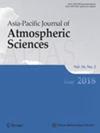Challenges in Attributing the 2022 Australian Rain Bomb to Climate Change
Abstract
In February and March 2022, the eastern coast of Australia recorded an unprecedented amount of precipitation with extended floods and damages to properties amounting at least to AUD 2.3 billions. In this paper we use both reanalysis and observations to perform a statistical and dynamical attribution of this precipitation event to climate change. We define 1948-1977 as the counterfactual period and 1990-2019 as the factual one. The statistical attribution is based on fitting the generalized extreme value distribution for 3-days averaged precipitation annual maxima for the two periods, while the dynamical attribution aims at looking at the recurrence properties of sea-level pressure and geopotential height patterns in both periods. We find that the dynamics of the event consists in an unprecedented combination of several factors: a tropical atmospheric river, the presence of the Coral low pressure system and a blocking anticyclone offshore Eastern Australia. Our main finding is that no clear attribution statements can be made, both because of the unprecedented nature of this event, the lack of long high quality available data and the dependence of the results on the La Nina phase of El Nino Southern Oscillation.


 求助内容:
求助内容: 应助结果提醒方式:
应助结果提醒方式:


